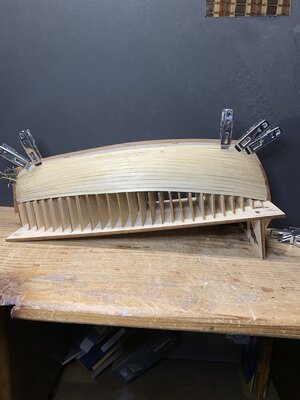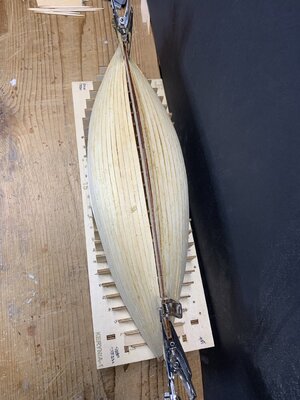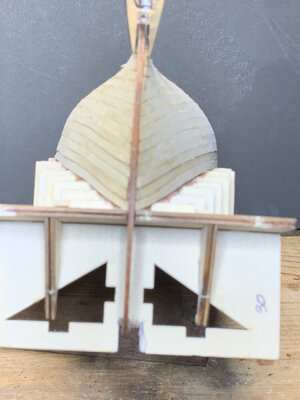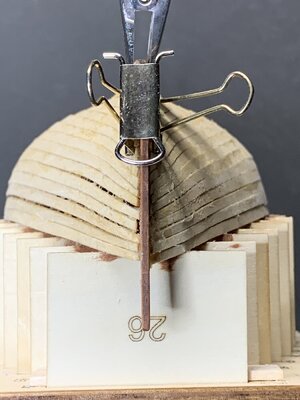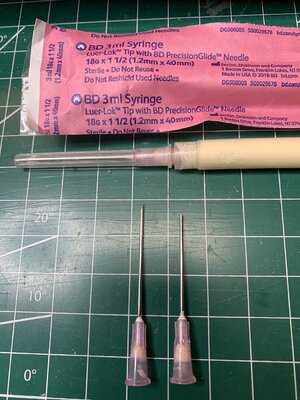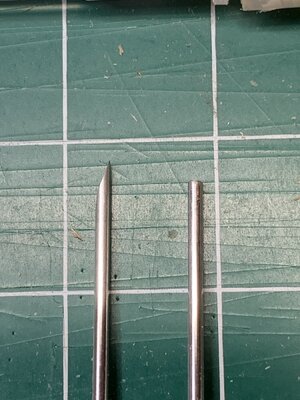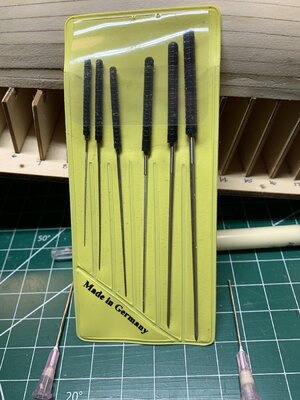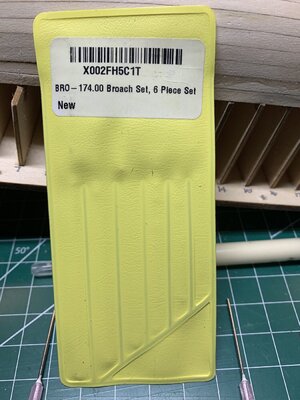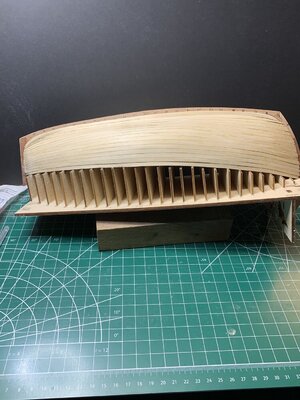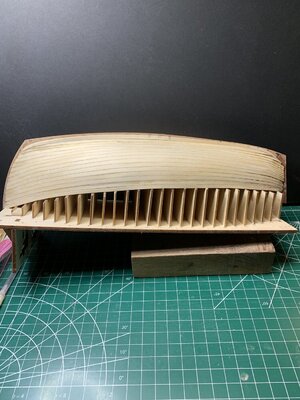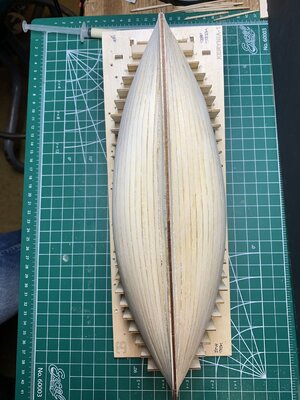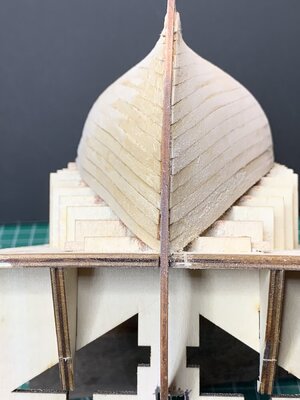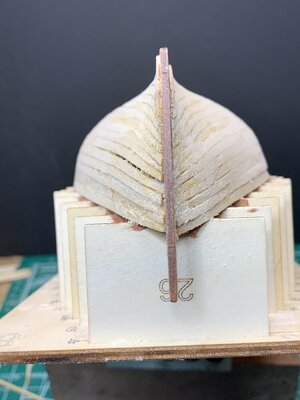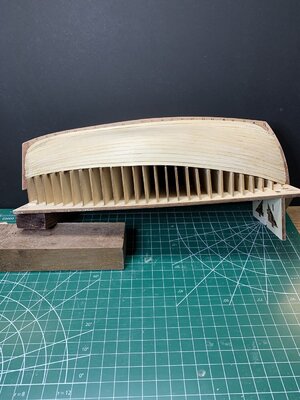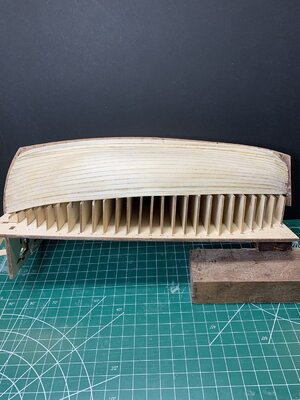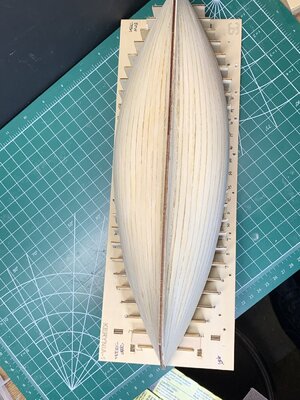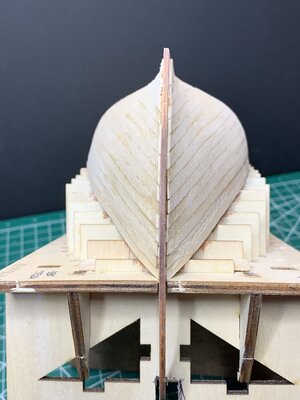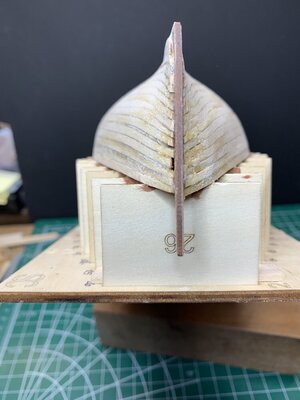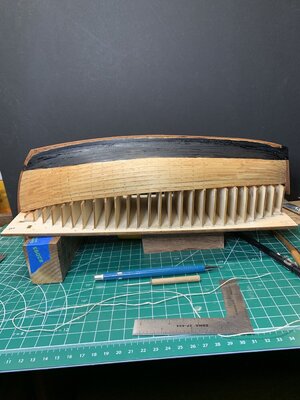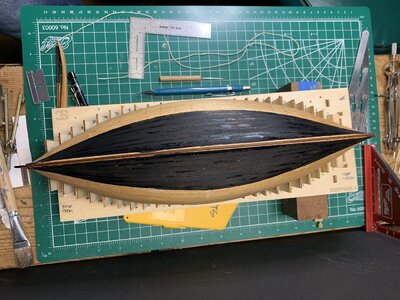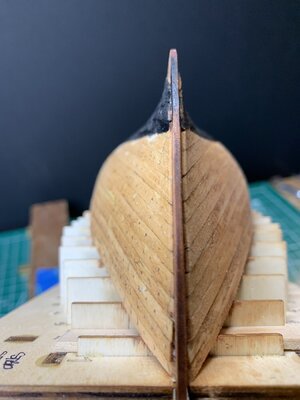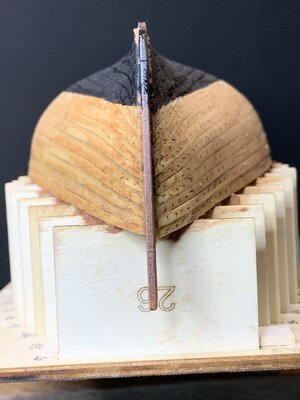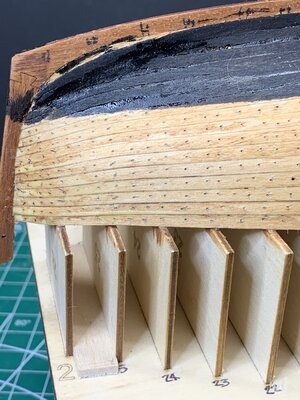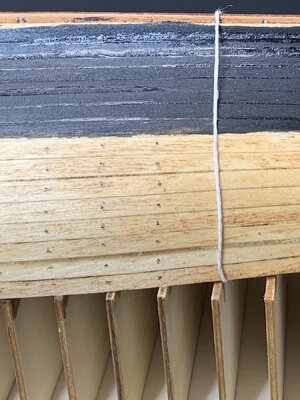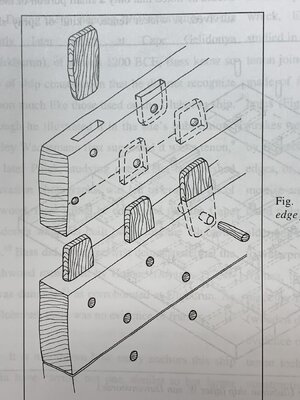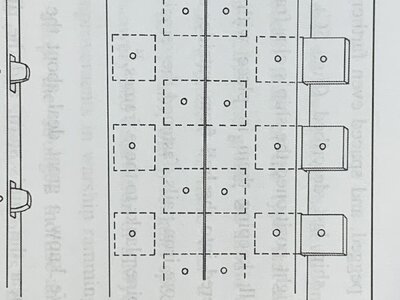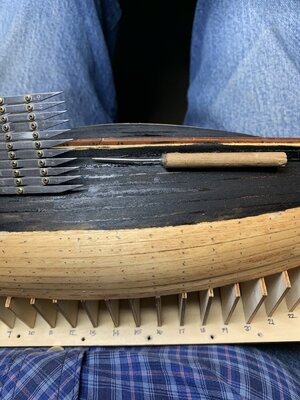After inserting the suggested bow plank gap wedge and more sanding/filling I applied a stain pre-coat before a stain mix of 10 Golden Pecan to 1 Golden Mahogany to the upper 2/3 of the hull. Once soaked in a wiped off I put on a first coat of semi-gloss black which mainly went into the wood except where there were adhesive and sawdust patches which are glossy. This this morning I tried to poke and pencil impress the faux pegs of the tennons of the hull mortise and tennon structural system. Tryied to stay with the 1:43 scale for the actual spacing of these which did not work out at all. I abandoned that and went to a regular longitudinal and mid plank spacing fore and aft of the miserable scaled spacing on the stbd side. Next moving to the port I have begun frames spacing using a string around the hull and over the frames marked on the keel side which is why it is not painted at this stage. When those are completed I'll go back to do two 1/3 intervals pegs for each plank. This will be the presentation side of the boat.
Lots of touch up and work ahead but it is progressing in this "let it all hang out build log".
First is a Stbd .
View attachment 263798
Now the Keel view with bare keel:
View attachment 263799
side elevation with the hull still inverted in the build jig:
Next the Bow view:
View attachment 263800
And the Stern view:
View attachment 263801
Now the faux tennon pegs in the first scaled layout that was abandoned mid-shi;s:
View attachment 263802
Lastly is the opposite side with initial "boundary" frame spaced guide pegs and the guide string along the fame side and mark on keel:
View attachment 263803
AS I have mentioned before, I like using thin candle wick waxed string as it ties into a "locked" knot very easily.
Several hours of faux pegs tomorrow and then reconsideration of that black hull bottom as I don't want a gloss finish but have to get more onto this "flat black" appearing wood. The edge will be the tricky part as masking did not work very well with some paint running under the edge with the irregularities on the planks surfaces and edge joints. I will likely use a very fine long bristle artists brush to "drag" out the paint on that line so that I can see what is happening and not be surprised when a masking tape line is removed.





